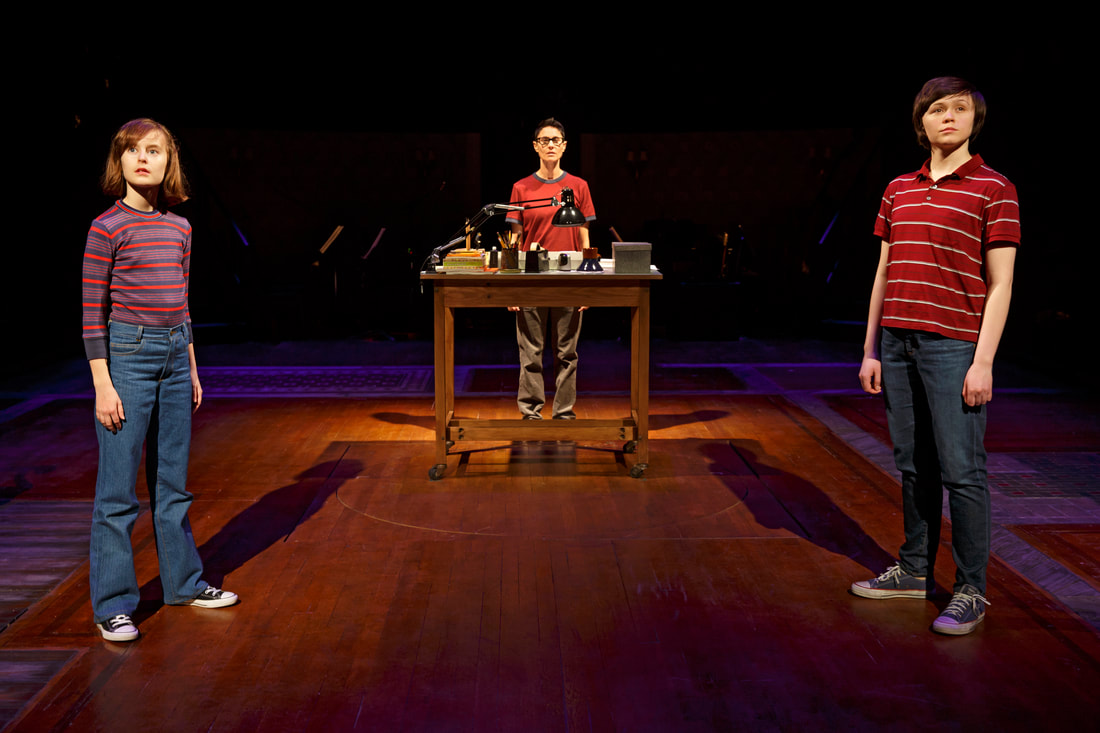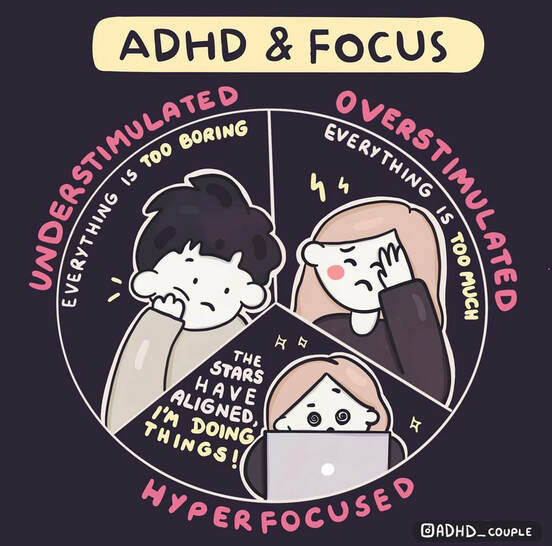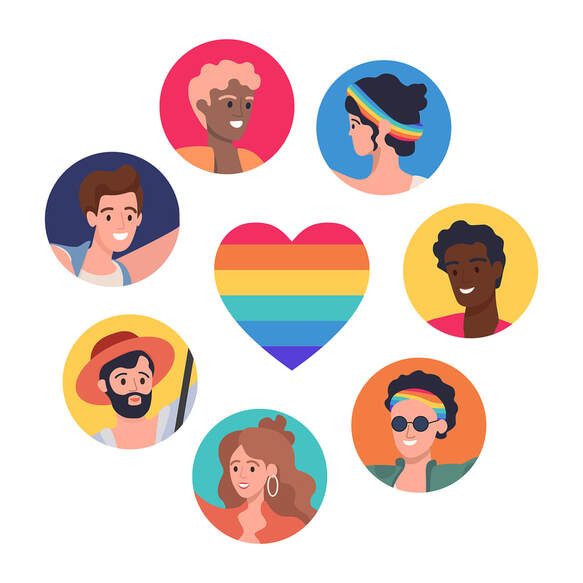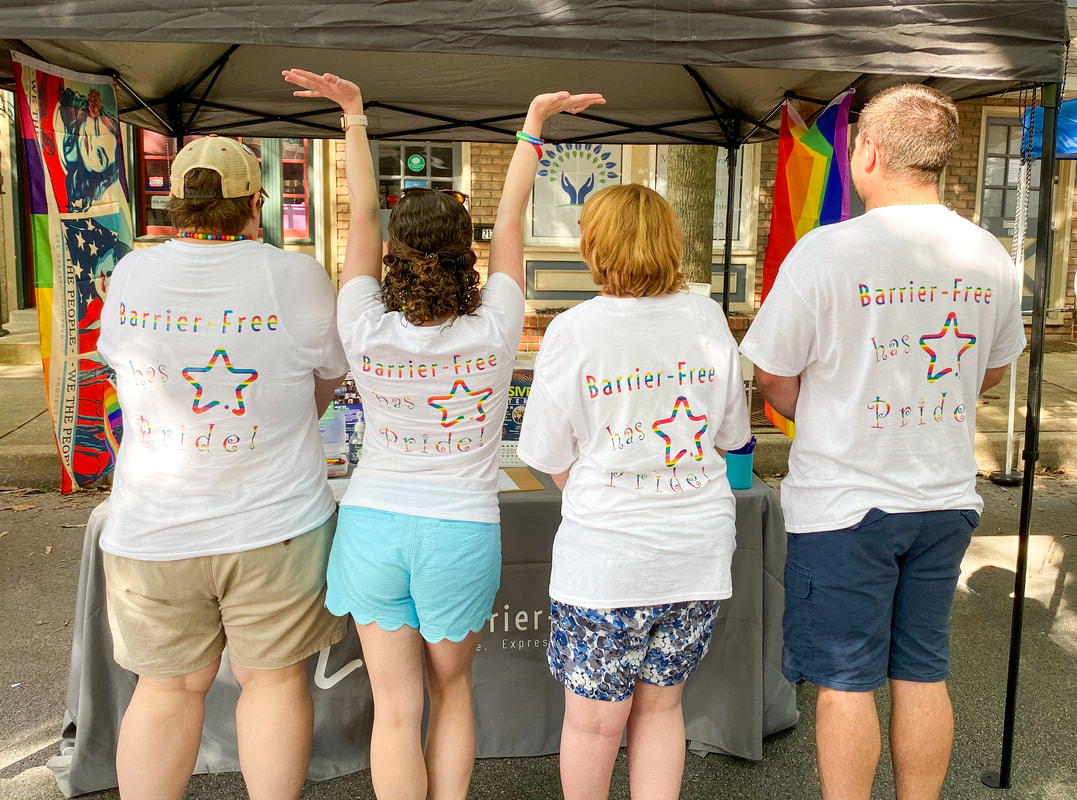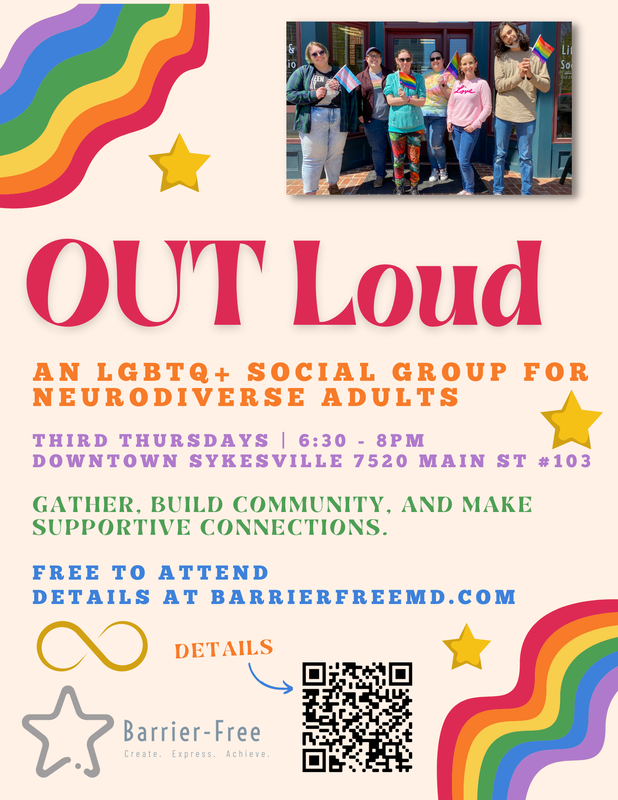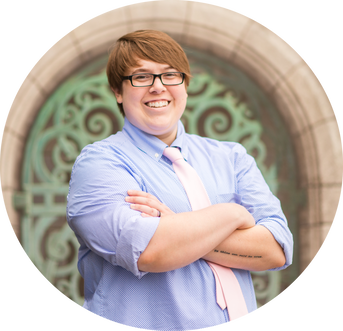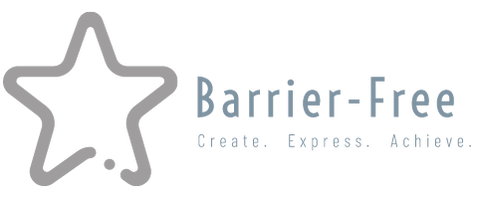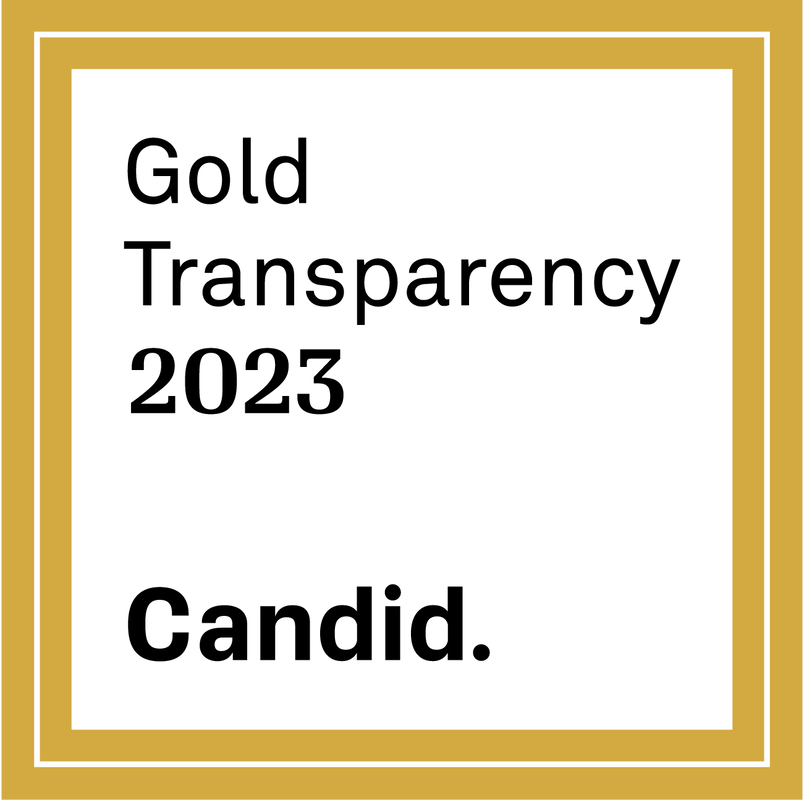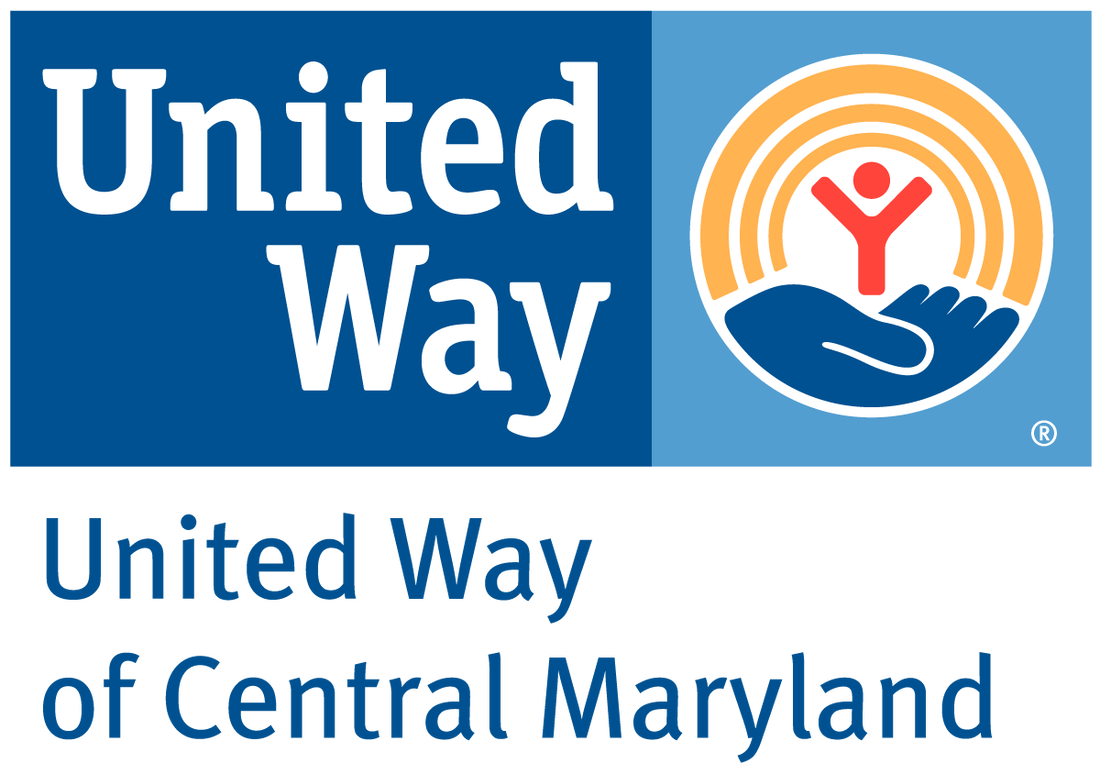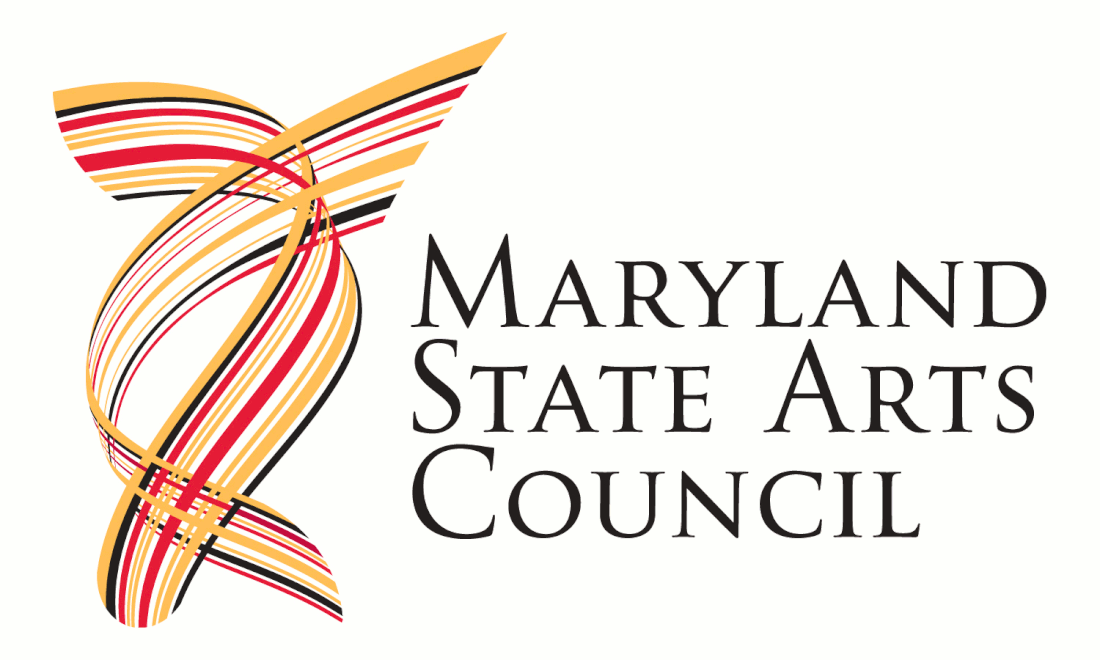|
By. Britt Burr, Creative Director In the Broadway musical FUN HOME, Alison Bechdel, the lesbian protagonist, tells a story about the discovery of her own sexuality and her relationship with her gay father. This storytelling, narrated by Alison, is done through a series of vignettes set in the past. In one vignette, a young Alison sits with her father at a diner while he drinks his coffee. A delivery woman enters. Described by Alison, the delivery woman is an “old-school butch”. This is Alison’s first experience seeing a lesbian outwardly expressing a style that she inwardly desires for herself. Alison sings “Ring of Keys”—a reference to the woman’s massive number of janitor-style keys strapped to her belt loop. In the song comes my favorite line: Do you feel my heart saying hi? There is an innate understanding I have when it comes to autistic people. I don’t mean this to toot my own horn, and I realize that everyone with autism is different. I say this humbly knowing that if you’ve met one person with autism, you’ve met one person with autism. However, my general understanding of this population is something I have tried to figure out for a long time. I have a deep level of intrinsic knowledge when it comes to interacting and engaging with people that are neurodiverse. I’ll be minding my own business shopping at Target and then, the next thing I know, I have managed to find the only autistic person in the store—or they find me. In the past, I have chalked this up to being in the field for a long time—able to point out certain indicators that others may have easily overlooked. Or, I chalked it up to having an autistic father and seeing similarities in him, that I see in others. And sure, these things have definitely helped me, but the understanding is still much deeper. But what exactly is it? Maybe it was my own neurodiversity? Not only am I gay, I have ADHD. At times, my ADHD can exhibit itself in ways that are similar to those on the spectrum. Sometimes I have abilities that feel like “super powers”—being able to knock out tasks in record speed, or writing a 15–20-page research paper in under an hour. I can observe, process, and retain information rapidly and can often figure out smarter, creative ways to do things to save more time; opposed to others that may work “harder” or longer only to exert more energy. These skill sets have made me great at what I do. In fact, as I write this right now, I am in my world of hyperfocus. I am on cloud nine. My mind is reeling. I am so into this. Nothing around me exists. It is me and this blog. And as I peel back the mask for you to see inside this wacky head of mine, I am both anxious not knowing how you will respond, and ecstatic because I finally get to talk about this. But I know the crash will come soon and the fatigue will set in. So, my hyperfocus comes at a cost. And, I am not without other struggles in my life. I succumb to time blindness—not being able to predict how long a task will take, or getting completely immersed in a task where hours have flown by in a blink of an eye. I have a high level of justice sensitivity where I feel the need to advocate for every inequity I come across. If not in constant check, I will likely voice my concerns uncensored should the opportunity present itself. This is paired with a low tolerance for bureaucracy and arbitrary rules of society. And info dumping —get me rolling on a topic I am passionate about and you’re likely to be sitting there for a while. Thank you for sitting here for a while. These things have made me who I am and have paved the way for Barrier-Free to succeed—because I get it. WE get it. My own neurodivergence paired with my lived experience acts as a translator between the neurodiverse and the neurotypical world. But still, there is a connection here that we’re missing… It wasn’t until I expressed this to my wife, Lauren, who indicated she felt the same way—that a correlation between neurodiversity and the LGBTQIA+ community exists. We began to name all the queer people we knew that were either autistic, or had a family member on the spectrum. WOAH. Hang onto your hats. ----------------- Intersectionality. A crossroads where two seemingly different things overlap. The two things: Neurodiversity and the LGBTQIA+ community. Of the 34+ queer people Lauren and I could name off of the top of our heads (people in our immediate orbit), 23 of them either had a sibling, parent, aunt, or uncle on the spectrum, were on the spectrum themselves, or personally identified as having some type of other neurodivergence (i.e., ADD/ADHD, or OCD). Interests peaked, we wanted to know, have other researchers recognized this yet? Is this even on people’s radar?! Knowing that there are variant genes surrounding sexual orientation (Ganna et al., 2019) and that autism runs in families (NIH, 2021), we “hit the books” and gathered some more empirical research. ----------------- In a recent study, 247 autistic women were interviewed regarding their sexual orientation (Bush et al., 2021). Among them, over half reported that they fell on the asexual spectrum—i.e., never or rarely experiencing sexual desire. The other half identified as either demi-sexual (experiencing sexual desire only after a deep personal connection), bisexual, or pansexual. Only 8% (approx. 20 people) of the entire sample of 247, identified as strictly heterosexual. There are also elevated rates of gender nonconformity among autistic populations (Warrier et al., 2020). The reasoning behind this is not entirely clear, but there is a prediction that it is attributed to the autistic trait of not conforming to social rules (Kallitsounaki et al., 2021). Because there is a divergence in interpreting certain social norms, autistic people are not bound by the conforms of society, thus they exhibit themselves how they want without social pressures weighing them down. It is predicted that some queer individuals with invisible neurodivergence may have gone undiagnosed due to the social stigma surrounding the LGBTQIA+ community (Moreno et al., 2017). Sometimes queer people are met with derision when it comes to routine examinations and check-ups as they are forced to answer uncomfortable questions from often uneducated (in terms of queer culture edification) and unempathetic healthcare providers. This has possibly led to a discrepancy in neurodiverse LGBTQIA+ individuals receiving diagnoses--a diagnosis which could permit helpful accommodations. There is more research that needs to be done, as these concepts are relatively new, hence the date of their publication. Nevertheless, the intersectionality between LGBTQIA+ individuals and neurodiversity cannot be overlooked. As always, there are outliers in research. Some people can be strictly gay, or strictly autistic—with no queer/neurodivergent markers, but all in all, a correlation is noticed here. Which leads me to my next thought… Maybe the autism spectrum and the spectrum of queerness are not spectrums at all—at least not separate spectrums. Or, perhaps these spectrums can overlap. They don’t have to, but they can. ----------------- So, when a queer person encounters a neurodivergent person, or a neurodivergent person encounters a queer person and you feel that pull in your gut… Maybe it’s just our hearts saying hi. Join us at OUT LoudOUT Loud, is a social and peer-support group for neurodiverse LGBTQ+ folx to gather, build community, and make supportive connections. We celebrate the intersectionality between the neurodiverse community and the LGBTQ+ community. References Bush, H. H., Williams, L. W., & Mendes, E. (2021). Brief Report: Asexuality and Young Women on the Autism Spectrum. Journal of Autism and Developmental Disorders, 51(2), 725–733. https://doi.org/10.1007/s10803-020-04565-6 Ganna, A., Verweij, K., Nivard, M., Maier, R., Wedow, R., Busch, A., Abdellaoui, A., Guo, S., Sathirapongsasuti, F., Lichtenstein, P., Lundström, S., Långström, N., Auton, A., Mullan, K., Harris, Beecham, G., Martin, E., Sanders, A., Perry, J., Neale, B., Zietsch, B. (2019). Large-scale GWAS reveals insights into the genetic architecture of same-sex sexual behavior. Science, 371 (6536), 1-9. https://www.science.org/doi/epdf/10.1126/science.aat7693 Kallitsounaki, A., Williams, D. M., & Lind, S. E. (2021). Links Between Autistic Traits, Feelings of Gender Dysphoria, and Mentalising Ability: Replication and Extension of Previous Findings from the General Population. Journal of Autism and Developmental Disorders, 51(5), 1458–1465. https://doi.org/10.1007/s10803-020-04626-w Moreno, A., Laoch, A., & Zasler, N. D. (2017). Changing the culture of neurodisability through language and sensitivity of providers: Creating a safe place for LGBTQIA+ people. NeuroRehabilitation, 41(2), 375–393. https://doi.org/10.3233/NRE-172187 National Institute of Neurological Disorders and Stroke (2021). Autism Spectrum Disorder Fact Sheet: What Roles to Genes Play? https://www.ninds.nih.gov/Disorders/Patient-Caregiver-Education/Fact-Sheets/Autism-Spectrum-Disorder-Fact-Sheet#3082_6 Warrier, V., Greenberg, D. M., Weir, E., Buckingham, C., Smith, P., Lai, M.-C., Allison, C., & Baron-Cohen, S. (2020). Elevated rates of autism, other neurodevelopmental and psychiatric diagnoses, and autistic traits in transgender and gender-diverse individuals. Nature Communications, 11(1), 3959. https://doi.org/10.1038/s41467-020-17794-1
3 Comments
|
About our BlogThe Barrier-Free blog exists as a space to share Barrier-Free news, helpful information, and a creative sharing space. Archives
March 2024
Categories
All
|
|
Copyright © Barrier-Free 501(c)(3) All rights reserved.
|
|

